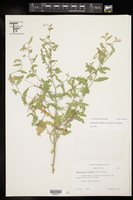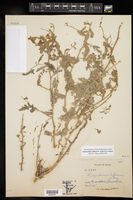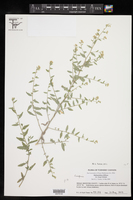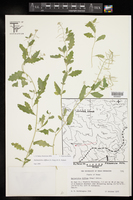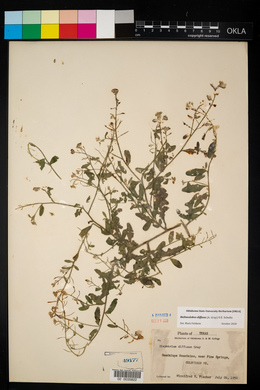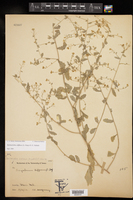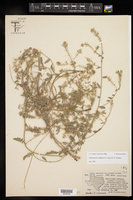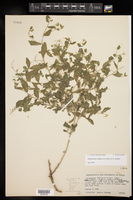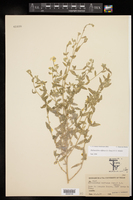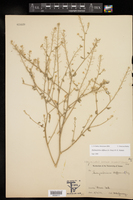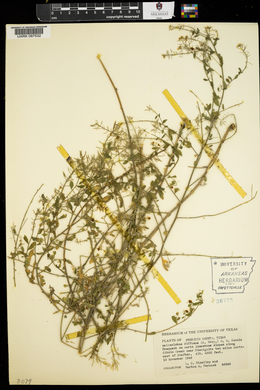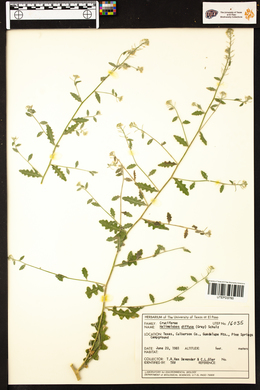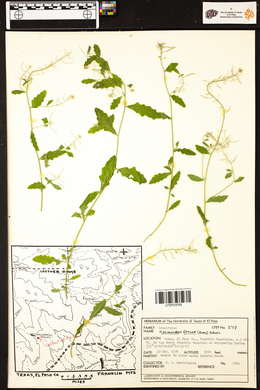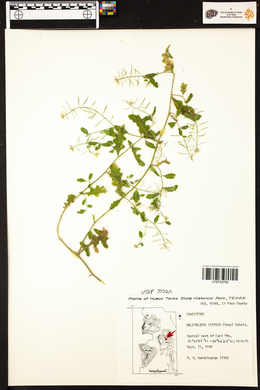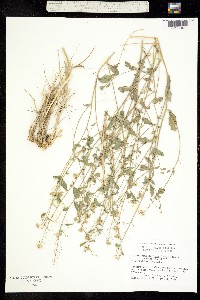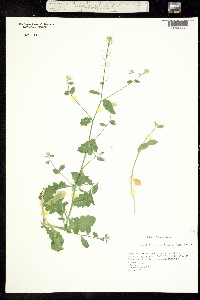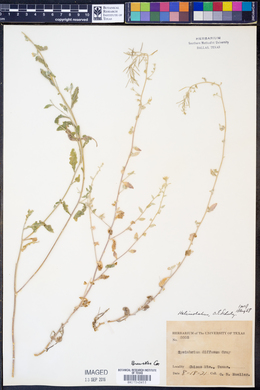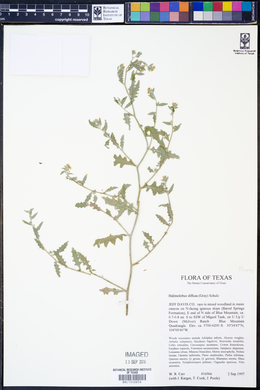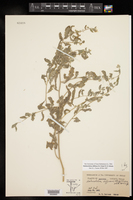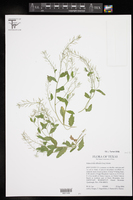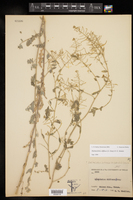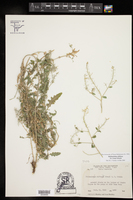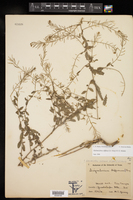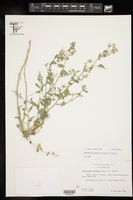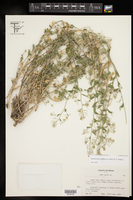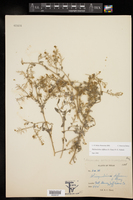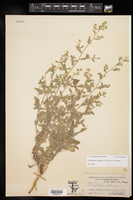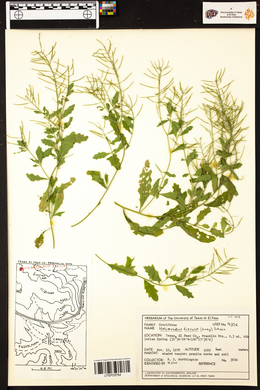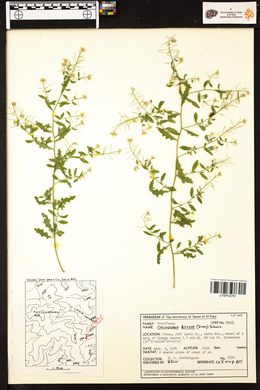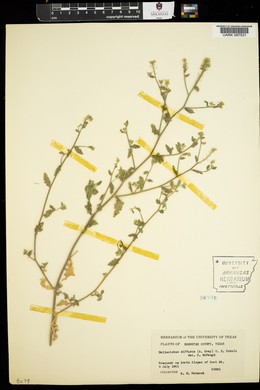Halimolobos diffusa
|
|
|
|
Family: Brassicaceae
Spreading Fissurewort, more...spreading halimolobos
|
Perennials. Stems erect to ascending, often paniculately branched distally, (1.2-)3-7.5 (-12) dm, trichomes sessile or subsessile. Basal leaves absent on older plants. Cauline leaves petiolate or (distal) sessile; petiole 0.5-1 cm; blade oblanceolate, lanceolate to oblong, or elliptic, (1-)2-5.5 (-7) cm × (4-)7-20(-30) mm (smaller distally), base cuneate, margins sinuately lobed or dentate, surfaces with minutely stalked to subsessile trichomes. Racemes slightly to considerably elongated in fruit. Fruiting pedicels usually divaricate, rarely slightly descending, (2-)3-6(-9) mm. Flowers: sepals slightly spreading, 1.2-2 × 0.4-0.7 mm; petals (slightly spreading), spatulate, (slender), 1.8-2.5 × 0.7-1 mm, claw distinctly differentiated from blade, 0.5-1 mm; filaments spreading, 2.2-3 mm, longer than petals; anthers 0.3-0.5 mm. Fruits divaricate or slightly descending, straight, subtorulose, linear, terete, 0.6-1.4(-1.7) cm × 0.5-0.8 mm; ovules 16-24 per ovary; style 0.7-1(-1.5) mm. Seeds uniseriate, 0.8-1 × 0.4-0.6 mm. Flowering mid Jul-mid Nov. Shaded talus, ravines, granite outcrops, rock crevices, bluffs, steep canyons, limestone slopes, oak-juniper communities, igneous slopes; 1100-2300 m; Ariz., N.Mex., Tex.; Mexico (Chihuahua, Coahuila). FNA 2012, Jepson 2012, Kearney and Peebles 1969 Duration: Perennial Nativity: Native Lifeform: Subshrub General: Herbaceous perennials, to 75 cm tall, stems erect to ascending, diffusely branched above, herbage soft-canescent with many branched, tree-like hairs, plants with a more or less woody base. Leaves: Alternate, oblanceolate to obovate, 1.5-11.5 cm long, the bases tapered, margins deeply sinuately lobed to coarsely dentate or pinnatifid, surfaces densely hairy, the proximal and middle cauline blades petioled, petioles to 1 cm long, distal blades sessile, basal leaves absent on older plants. Flowers: Bright white, with 4 petals forming a cross, bisexual, the petals oblanceolate to spoon-shaped (spatulate), 3.5-6 mm long and 1-1.5 mm wide, the claws distinctly differentiated from the blades and 0.5-1 mm long, sepals 4, erect to slightly spreading, 2-4 mm long, the bases not sac-like, stamens generally 6 with 4 long and 2 short, filaments spreading, 2.2-3 mm long and longer than the petals, anthers 0.3-0.5 mm long, ovary solitary, superior, generally 2-chambered with a septum connecting the 2 parietal placentas, style solitary, stigmas entire or 2-lobed, the racemes of the inflorescences becoming slightly to considerably elongated in fruit. Fruits: Siliques, cylindric to terete, very slender, 1-2.6 cm long and to 1 mm wide, unsegmented but constricted between the seeds, the valves densely hairy, styles 1-2.2 mm long, pedicels spreading, 3-12 mm long, densely hairy, flat parallel or perpendicular to Ecology: Found on limestone cliffs, steep rock outcrops, shaded talus, ravines, granite outcrops, rock crevices, bluffs, steep canyons, limestone slopes, igneous slopes, oak-juniper communities, and in sagebrush-juniper areas, from 4,000-8,500 ft (1219-2591 m); fl Distribution: Arizona, California, New Mexico, Texas; Mexico. Notes: This species is included in Transberingia in Jepson 2012. Ethnobotany: Unknown, but other species in the genus have uses. Synonyms: None Editor: LCrumbacher2012 |




